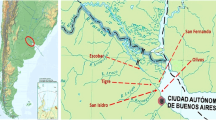Abstract
Tributyltin (TBT) compounds, some of the most toxic xenobiotics, produce a variety of pathological reactions in animals. A reliable biomonitoring method to assess the degree of environmental TBT pollution has been described based on investigations of virilization phenomena in prosobranch snails (Mollusca: Gastropoda). Examples are the imposex phenomenon in marine and freshwater species, the intersex reaction in littorinids and the reduction of female sexual glands and offspring numbers in further species resulting mainly in a sterilization of females. The degree of imposex or intersex in populations is determined by different biomonitoring indices which allow to assess the TBT pollution of the environment at low costs with high precision. The effectiveness of TBT legislations is analysed by extensive surveys in France and Ireland indicating that there is still a continuing threat to sensitive marine organisms. TBT disturbs the biosynthesis of steroid hormones on the level of estrogen biosynthesis. The observed virilization phenomena seem due to an inhibition of the cytochrome P-450 dependent aromatase by this organotin compound.
Similar content being viewed by others
Author information
Authors and Affiliations
Rights and permissions
About this article
Cite this article
Oehlmann, J., Markert, B., Stroben, E. et al. Tributyltin biomonitoring using prosobranchs as sentinel organisms. Fresenius J Anal Chem 354, 540–545 (1996). https://doi.org/10.1007/s0021663540540
Received:
Accepted:
Issue Date:
DOI: https://doi.org/10.1007/s0021663540540




